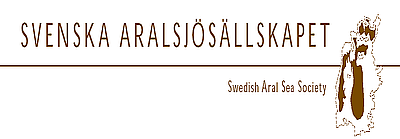7a.
A culture of mobility
Mobility is a main aspect of life. Many species travel extensive distances as parts of their annual or even daily life patters. We may remind ourselves of migratory birds, of herding animals moving for grazing land or carnivores roaming vast territories. Man seems to be such a mobile species. Just walking around is for many a pleasure in itself. More extensive travels such as hiking in the mountains, pilgrimages or “wanderings”, are for many a pleasure and enjoyment, for some the best in life.

Yet in our societies 100 years ago almost everyone was stationary. The dialects remind us of that. On the average, a person in Sweden (probably the same in most countries in the region) moved not further away than 1 km a normal day, typically by foot. 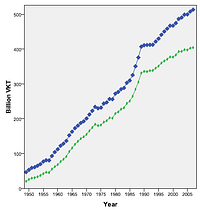 Today this figure, the extent of mobility, is closer to 35 km per day and almost twice as high for those – especially middle-aged men – with the highest mobility. On average, we travel close to one hour per day. It appears that this time is fairly constant over time, but the distance covered increases with faster cars, buses, trains, flights and better roads. Mobility has been increasing faster than GDP in many countries, and it is still increasing in e.g. the three Baltic States and Poland. When we have more money, we use much of it for travel.
Today this figure, the extent of mobility, is closer to 35 km per day and almost twice as high for those – especially middle-aged men – with the highest mobility. On average, we travel close to one hour per day. It appears that this time is fairly constant over time, but the distance covered increases with faster cars, buses, trains, flights and better roads. Mobility has been increasing faster than GDP in many countries, and it is still increasing in e.g. the three Baltic States and Poland. When we have more money, we use much of it for travel.
There are many advantages of mobility. Better possibilities to travel means that an individual may more easily meet friends and family, take an attractive job further away, and visit distant shops, and sport events. These possibilities are highly valued by many and increase our quality of life and freedom. To be able to travel, to visit interesting places, enjoy sun and beaches and relax is a most favoured possibility in the welfare states where many have economic means and are healthy. In Sweden some 350,000 individuals travel to Thailand for holiday each year, to be compared to one or two generations ago when the typical destination was somewhere in Sweden, followed by the Mediterranean one generation ago.
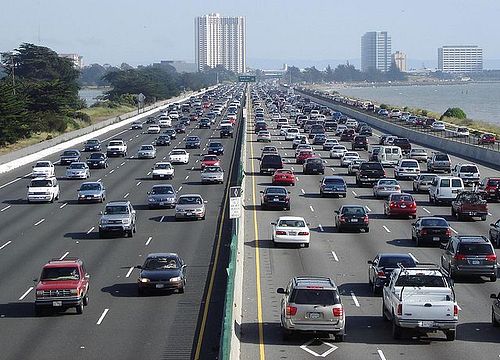
Mobility is of two kinds. So-called forced mobility is travelling which is not wanted by the individual, but required for work and needed social services. Most typical, this includes commuting between home and work. Travelling as part of the job is also increasing rapidly. Voluntary mobility is travel chosen by the individual, for example in connection with free time and tourism. Voluntary mobility, especially for tourism, is an important part of most peoples’ lives.
Tourism is one of the most rapidly increasing sectors of our economy. Tourism requires travel. So-called sustainable tourism seems not to include travels in their concept, as it is dealing mostly or only with what is happening at the tourist site. Most people select the cheapest way to travel, which for longer distances almost always is by air. Air travel increases very rapidly. It is also the most polluting in terms of emissions of carbon dioxide and other GHGs per person kilometre. We see a small increase in long distance train travel, which has much fewer emissions. How to make tourism more sustainable is a very difficult challenge.
Mobility may mean different things, from walking, travelling by bike, rail, boat and air, but today mobility is completely dominated by car use. Within the European Union (EU 27) about 85% of all kilometres travelled are by car. In interviews, most people refer to comfort and speed as the reason for using a car. It is interesting that those preferring other modes of transports from bikes to trains also refer to comfort and speed when asking why they prefer this mode of transport. But car ownership certainly has more dimensions than practical for transport. For many, a car symbolizes freedom, independence, and status.
Car ownership increases in society, with economy up to much more than one car per household. Cars are many, and it shows in the larger cities as congestion up to the point when car use becomes difficult, and restrictions have to be introduced by authorities. Some cities (e.g. Stockholm, Oslo, and London) restrict car use by a tax on entering the city. If all German cars were on the roads simultaneously, the average distance between them would be 12 meters. Cars are also a major factor on the economy of our societies. If sales, repair, fuels, insurance etc are all included it totals some 10-15% of the economy of Western Europe and a large share of all work opportunities.
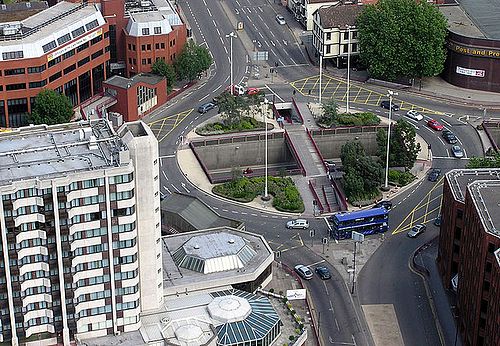
The increased preference for cars has obvious consequences for how our cities, villages, and countryside looks like. The mobility infrastructure is a key feature of our societies. Traffic-scapes are dominating our outdoor environment, especially in cities but also in countryside. In cities this is mostly negative for culture and the architecture, possibilities to meet and social relations. In cars, people are isolated and do not interact. “Reclaim the cities” is a counterforce; the increased number of car-free city centres as well. In the countryside, roads and railroads are cutting off mobility for animals, and reduce biodiversity. It is sometimes attuned by animal tunnels and bridges.
The high level of mobility has large costs and is at present not sustainable. The three most serious consequences are environmental impacts, energy use and a high level of accidents. Each of these is multifaceted, serious, and difficult to reduce. Today, these costs have increased far beyond what is sustainable. Instead, it appears that mobility and travel is one of the largest, perhaps the largest, challenge in the transition to a sustainable society.
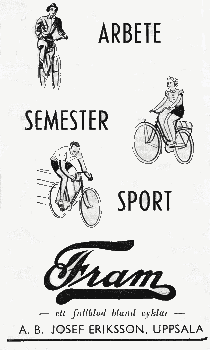 Car traffic is mainly responsible for these effects. It is a large consumer of oil. The transport sector accounts for about 40% of GHG emissions in Western Europe, a share which is increasing. Ways to make transport less dependent or even independent on fossil fuels are thus necessary. Pollution of air by car exhausts is also serious and causes large negative health effects. The rate of accidents in the transport sector is serious. In the EU25, 44,000 fatalities occurred in road traffic in 2004, and very many more were seriously injured.
Car traffic is mainly responsible for these effects. It is a large consumer of oil. The transport sector accounts for about 40% of GHG emissions in Western Europe, a share which is increasing. Ways to make transport less dependent or even independent on fossil fuels are thus necessary. Pollution of air by car exhausts is also serious and causes large negative health effects. The rate of accidents in the transport sector is serious. In the EU25, 44,000 fatalities occurred in road traffic in 2004, and very many more were seriously injured.
But there are other ways to move than by car. Biking has many advantages over car traffic, but of course do not compete at longer distances. Public transport, when functioning properly, is as well a more sustainable alternative. Choosing these means of transport over car is very much a question of mobility lifestyle. In larger cities in the world it appears that there is a new trend as car ownership is decreasing slowly since a few years.
Materials for session 7a
Basic level
- Read A Sustainable Baltic Region, session 6, chapter 1: The Challenges of Mobility.
- Read A Sustainable Baltic Region, session 6, chapter 2: How and Why – The Development of Mobility.
- Read A Sustainable Baltic Region, session 6, chapter 3: The Cost of Transportation – Energy and Environmental Impact.
- Steps to Improve Sustainable Mobility (at youris.com).
Medium level (widening)
- Exploring Mobility Solutions — Civitas. The Civitas EU project is a resource for a long series of EU projects for Sustainable mobility.
Advanced level (deepening)
- Read A Sustainable Baltic Region, session 6, chapter 5: Approaches to Sustainable Mobility.
- Read A Sustainable Baltic Region, session 6, chapter 8: Life-Style and Mobility.
- Read the Global Plan for the Decade of Action for Road Safety 2021-2030 (UN United Nations Road Safety Collaboration and other stakeholders).
References
Tengström, E. and M. Thynell. (eds.) 1997. Towards Sustainable Mobility – Transporting people and goods in the Baltic Region. A Sustainable Baltic Region. Session 6. Baltic University Press, Uppsala.
BUP Sustainable Development Course
